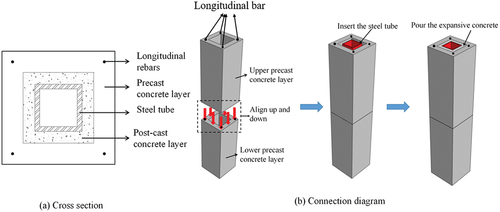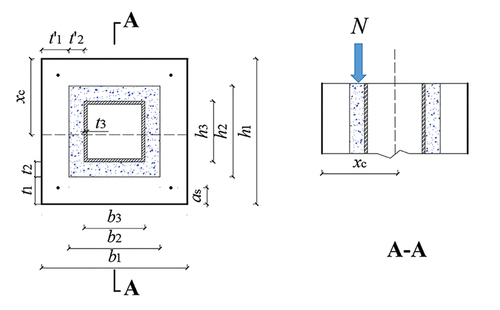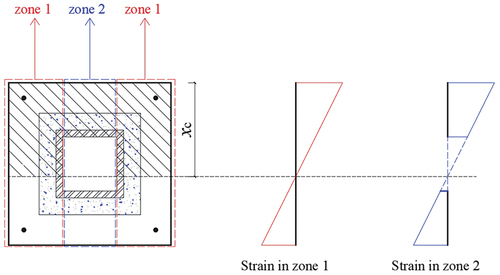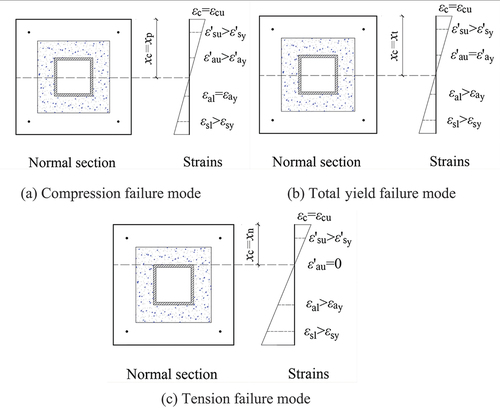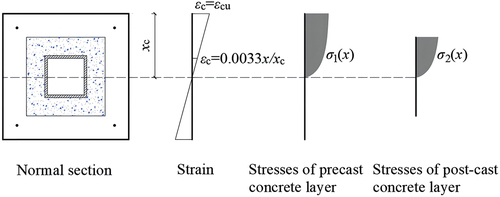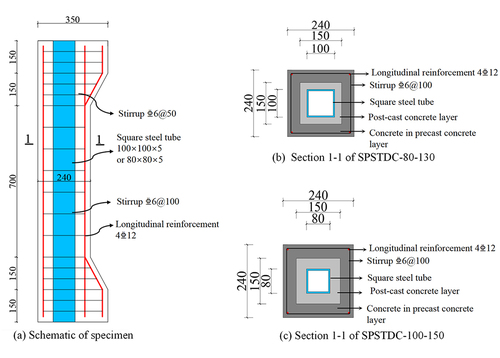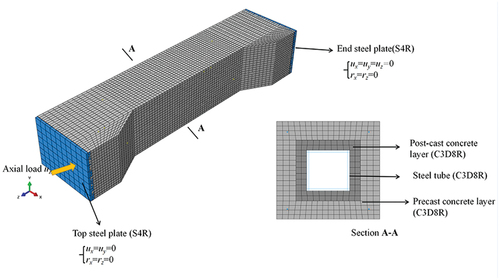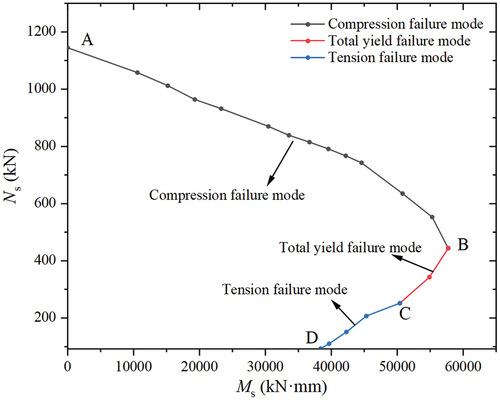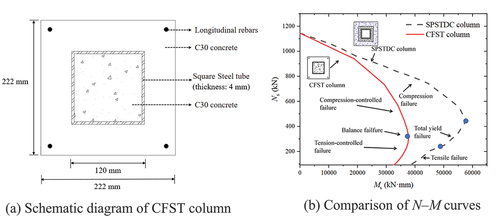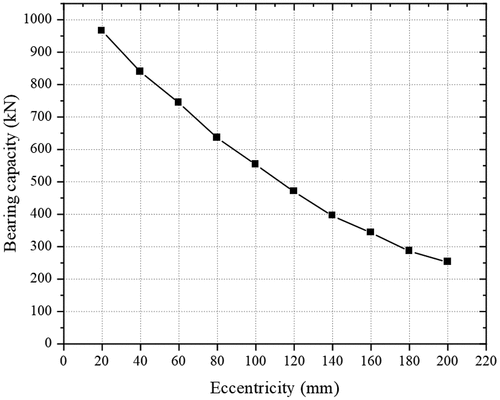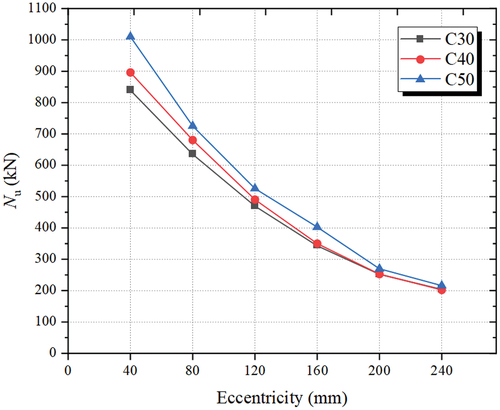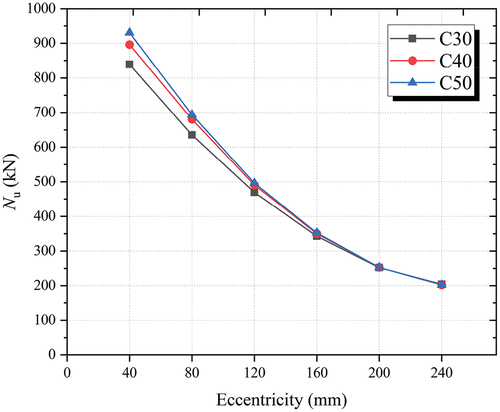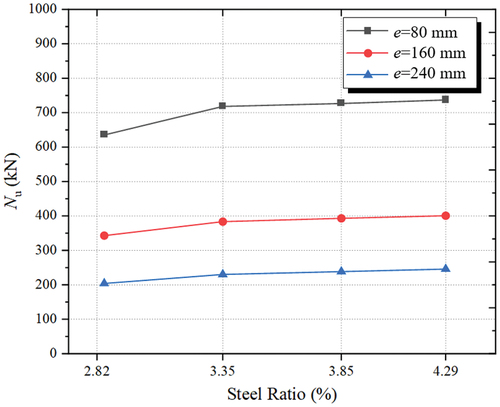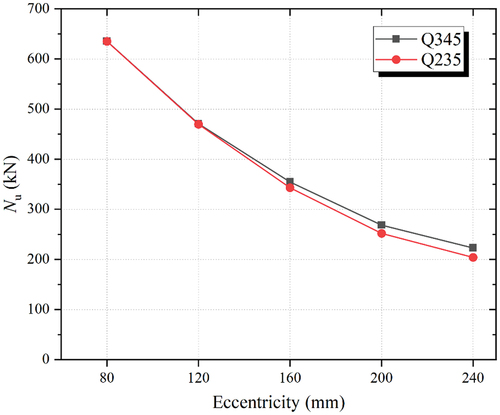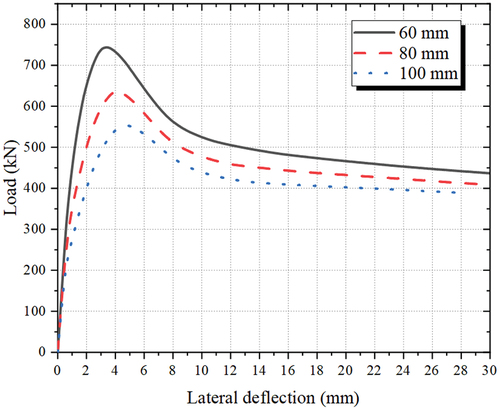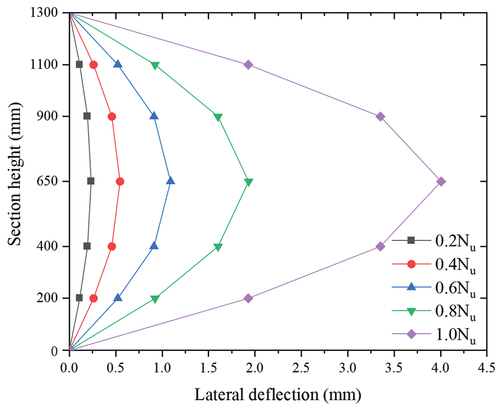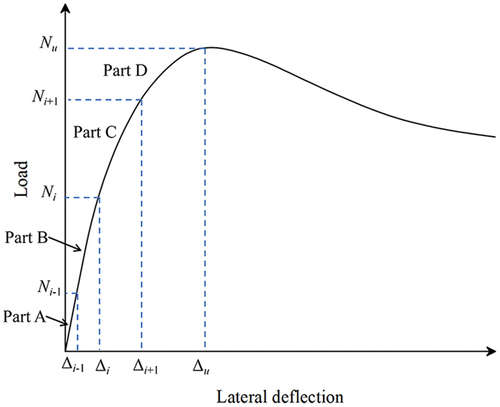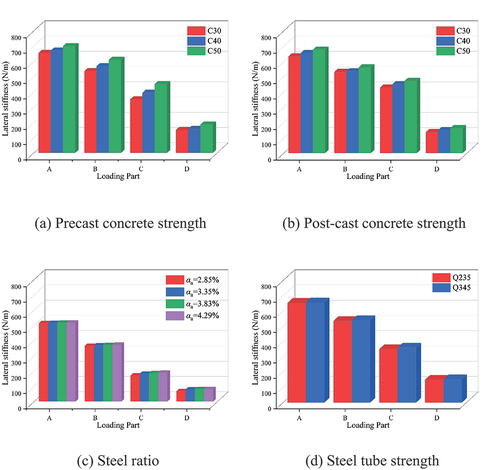Figures & data
Table 1. Core features of each limit state.
Figure 6. Stress and strain state of the normal section for the limit state of the compression failure mode.
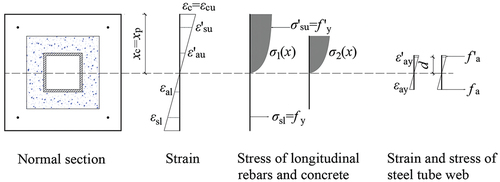
Figure 7. Stress and strain state of the normal section for the limit state of the total yield failure mode.
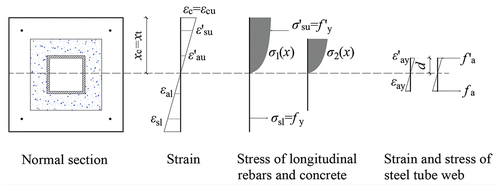
Figure 8. Stress and strain state of the normal section for the limit state of the tensile failure mode.
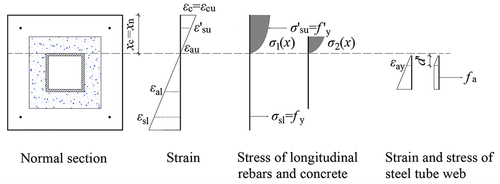
Table 2. Detailed information of all specimens.
Table 3. Mixture designs of concrete (unit: kg/m3.).
Table 4. Main mechanical parameters of concrete.
Table 5. Main mechanical parameters of steel.
Table 6. Comparison of Nc and Nt values for specimens.
Table 7. Comparison of Nc and Nt values for specimens.
Table 8. Parameters in concrete damage plasticity (CDP) model.
Figure 12. Comparison between equivalent plastic strain (PEEQ) cloud maps and the actual failure states of specimens.
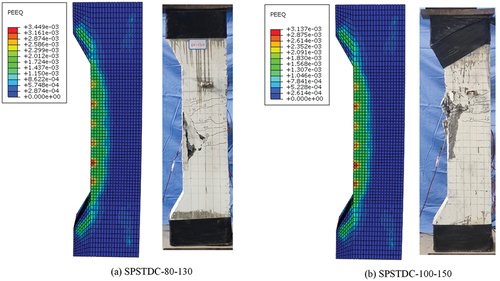
Table 9. Comparison of test and simulated bearing capacity values.

